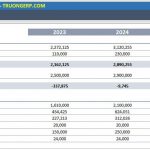The Implementation of the project is more or less similar for all standard soft wears. In SAP environment also the process of Implementation is similar. Implementation of a project is so easy to discuss but involves a lot complexity and cost. Hence has to be properly planned and monitor project in a systematic procedure. The Consultant team and core team has to define the Deliverable Milestones and accordingly monitor the project. Definition of Milestones in the project is a tough task for sr.consultant and senior executives of the company. Then only we can complete the Implementation task successfully. The total activities and programmes are to be document in a proper way. This document is a guide for implementation of a project. This document is called as ASAP METHODOLOGY OR SOLUTION MANGER. It is road map for the consultant, to customize the business processes. The success or failure mainly depends on the methodology we have adopted during the project implementation.
The implementation road map is primarily based on sequential methodology and consists of five phases that are to be executed sequentially. Those are
1. Project preparation
2. Business Blue prints,
3. Realization
4. Final preparation
5. Go live and support.
While preparing the above road map the consultants has to meet the core team members and interact with the people ascertain the required information relating to the existing process and their requirement in environment. (Core team is the group of expert people from various functional activates, to represent the company or the front line information providers to the consultants during the project implementation. For the Project purpose generally the participating companies forms a Steering Committee. The steering committee vested with the executive powers to define the new process or modify the process if required. It consists of the people from consulting company as well as implementing company. The steering committee is responsible for the successful implementation of the project. In Each Stage or Process certain activities are defined with time bound intervals. If you follow the pre set time norms in the each stage there will not be” analysis in paralysis “in implementation project. There are no hard and fast common time bound intervals for each project. These are different from one industry to industry and country to country also. Generally the road map is prepared basing on the Principle of Business processes or so-called As Is Processes. The new processes are defined in the project as “To Be Processes” with proper authorization from the steering committee or from the vested authorities. The consultants do not make the configurations beyond the scope document without proper authorization.
1. Project Preparation:
This is the first phase of implementation of project. In the phase the core component is Project Implementation Planning will be done. The Planning consists of all round activities relating to the implementation activities. Those are mainly defining existing goals and the new goals in the new environment. This is called as a project charter. There will not be any changes to the project charter unless and until the changes are approved by the competent authorities. Besides to the project charter, we have to define the implementation strategy, project standards for procedures and documentation procedures are defined. Apart from the project budget, and project resource planning (hardware requirement planning, technical requirement planning, defining system land scopes in new environment, human resources planning, etc) is also defined in the project preparation. The project goals and objectives, and other requirement definitions and planning and strategies to achieve the defined goals will be approved in the Kick off meeting. Kick Off meeting is the exact starting of implementation of the project. By this time all the members in the implementation team are fully aware of the scope document objectives.
The each phase of the road map concludes at predefined milestones. The quality checks to be made to the objectives defined for the phase. If the results are properly met with the set objectives, then the project manager from the company side will close the phase and confirms the results. He signed off the phase document having completed in all respects. Then we can go for the 2nd phase i.e. blue print preparation.
2. Blue print preparations:
The objective of the second phase of implementation road map is preparation of Business Blue prints. It is called as a design document for the future r/3 system. Business blue prints are the basic requirement for the 3rd phase of implementation (realization). There is no 3rd phase without Business Blue prints. The blue print for each task will put together as blue print for the project. The project manager will ascertain the status from each consultant member and evaluate to the steering committee, at regular intervals. The time interval for meetings with the members, attending the steering committee meetings, and other project analysis depend on the size of the project.
In the Blue print stage a proper knowledge transfer with core team members is must for effective implementation of the project.
In this phase as is process definition and to be process definition will be made. Accordingly change management to the new type of environment also initiated. System land scopes will also be determined. This is a comprehensive phase. Each area of scope document will be meticulously examined and prepares the best available business process and evolve the training methodologies to under stand the new business process environment is developed.
Last but not the least activity in the 2nd phase of blue print preparation is quality check for blue print preparations. For this purpose SAP provides separate tool for check.
3. Realization phase:
As per the business blue print requirement, and design decision, the activities are realized in the new environment. The realization phase can be concluded in two phases. The Base line and the final configurations. In this stage parameterization or customizations will takes place and ensure its authenticity and finally confirms the realization. Sap enhancements, script forms, and other developments can takes place in this phase of implementation. In this phase structure of an organization will be created and ensures its quality checks with the blue prints, and preliminary testing by using some test cases also will be done. With the completion of this realization, we can see the silhouette or an organization in the r/3 environment.
In this phase with the help of system administrator proper authorizations, check limits, duel control set ups and also defined. Final intra module integration test, and training classes for the end users, and training material will be prepared. Finally the routine activity of quality check will be conducted to know whether the milestones definitions are properly met or not. It ensures final acceptance and correctness of the configurations and accepted by the project management.
4. Final Preparation:
The fourth phase is to create a company in new environment in the production system. In this phase further enhancement for user programmes, system administration activities, and Cut- over dates for new environment is defined. As usually, the status and steering committee meetings will be conducted as before. Extensively end user training programmes will be conducted in the form of seminars, work shops, user master records creation and testing data will be processed. And further the system management will be also analyzed extensively.
Final activity testing will be done in the production system. Generally no changes can be made in production system. However, if any minor changes any made must be documented it properly for future reference. Quality checks will also take up in respect of achievement mile stones. In this Phase the Cut-over is the important activity. This will decides the go live and support phase.
5. Go-live and support:
Once the go live i.e. last phase is completed, as consultant, we must provide support in the production run for the end user till the system stabilizes. In this phase the main activity is to extend support to the end user and guiding them to check the data and reports for the requirement and other day to day problems in the new environment. For this purpose we can keep “Hand holding” to give the support for user. Once the system stabilized, the project management prepares for the acceptance of the productive environment by the steering committee or the company management.
End Project: the project should be ended officially at the completion of implementation of project. The project team will be relieved of its responsibility when all outstanding problems were cleared up or passed on to the help desk.
At finally the end results and business process results are compared and critical assessment of the complete project. These are only gist of the
Implementation Road Map or Methodologies for Project implementation. The above methodology is applicable for all types of standard soft wear implementations. Hence the understanding the methodology comprehensively, is said to be completed half of the implementation job.
Before going to configuration or customization we need to under stand the R/3 architecture. The R/3 architecture is the future silhouette of an Organization after implementation of the SAP standard softwear










One thought on “Phần 1.2 Phương pháp ASAP”